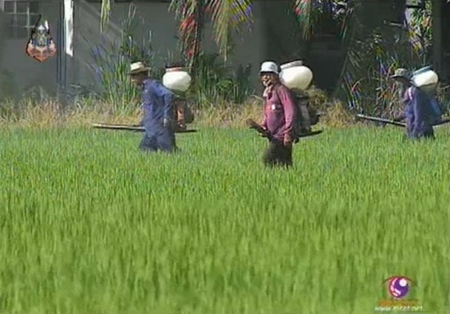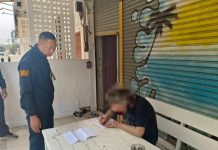June 5th marks National Rice and Farmers Day honouring Thai farmers and raising awareness among the public of the importance of rice.
Despite the profession of rice farming being the original vocation of many Thais, more than 16 million Thai rice farmers still live in poverty even though the government is trying to provide them assistance for sustainable rice farming.
However, there is even one such community in the Thai capital that has tried to survive with such an occupation.

More than 300 farmers in Bangkok’s Klong Sam Wa district are trying to retain their rice farming area of almost 10,000 rai of farmland. A rice community centre was set up to strengthen and protect their career as well as manage a complete cycle of rice farming starting from keeping seedstock, rice milling, to marketing strategies.
Yongyuth Tienrungruang, chairman of Klong Sam Wa Rice Community Centre, said he had spent over 30 years to create a method for rice farmers to make as much profit as possible from rice farming.

He said the method is for farmers to focus on doing rice farming themselves as much as they can in order that problems, if occurring, can be solved immediately and that production costs can be managed.
He also advised that farmers should also hire other workers and apply machinery use in their farms in order to save their own energy. Such methods will help reduce production costs from Bt4,000-5,000/rai of farmland to no more than Bt2,500/rai with a doubled harvest. Rice of 30 rai can make profits at almost up to Bt600,000/year, he said.
“Farmers must have a career, do what they’ve been doing, make money, make profit, have rice to eat, as well as have a good quality of life, and are happy,” said Mr Yongyuth, chairman of the Klong Sam Wa Rice Community Centre.

Rice farmers in the Klong Sam Wa community live their lives sufficiently. They eat the rice they grow and earn extra income from producing good rice seed received from the Rice Department and selling it to farmers nationwide. The prices they sell at are almost double the selling price of unmilled rice.
Meanwhile, Rice Department director-general Chairit Damrongkiat said the main reason why Thai farmers still live in poverty is because they do not have their own land to farm, while they use expensive fertiliser and chemical substances in their farms, particularly farmers in the Northeast, who count for more than 60 per cent of the overall farmer population in the country.

“I would say that most farmers still need assistance and are still poor, for firstly they have land problems. Also in Thailand’s Northeast, farmers can do rice farming only once a year. A problem of lack of water will occur if they want to grow rice twice a year,” Rice Department director-general Chairit.
The government is trying to develop more new rice breeds, expanding from the existing 16,000. The new rice breeds must be immune to diseases and durable to all kinds of weather and environment. Government-related agencies are as well conducting research on rice processing to add more value to rice in the form of cosmetics and healthy food.
In the latest development, a new form of rice growing is being developed as well as farmers’ welfare in order to comply with local geography and markets so that Thai farmers nationwide would have a better living standard. That being done, Thailand could possibly regain its position as the world’s number one rice exporter.




